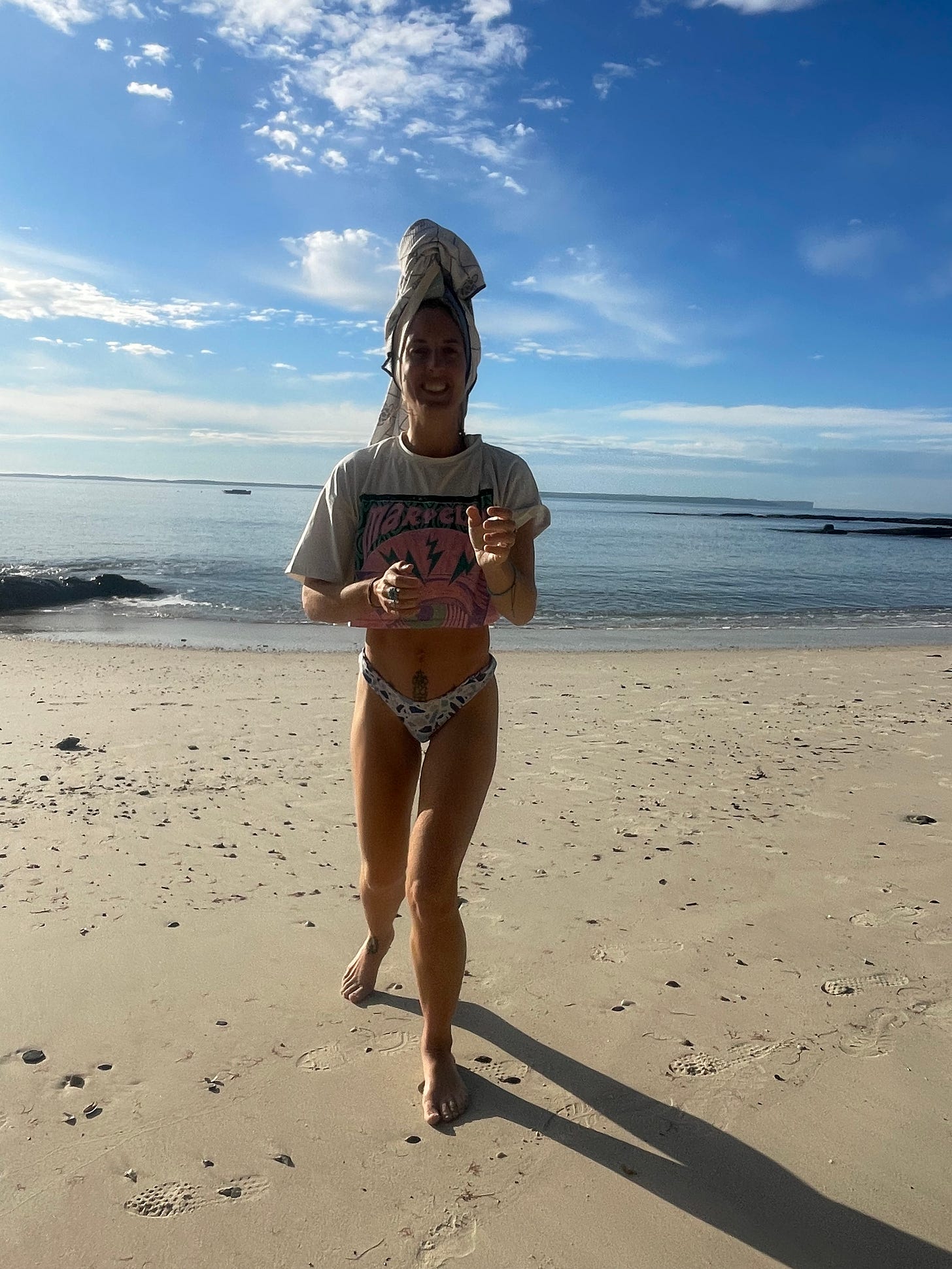Writers, Your Body Shame is Showing!
In response to *that* wedding, and more!
Hi, I’m Amy. 👋 Welcome to The LightWriter Letter. A space where mamas skate, kids are wise, and we share words that move the world forward. ✨
As a magazine editor in the early noughties, I worked at the height of the ‘ring of shame’ — when it was perfectly acceptable to put a celebrity’s body on a cover with the singular goal of pointing out their flaws.
Yes, this is blatant body shaming — but, in a way, our modern-day version is even more toxic, because it’s more subtle. (And, sometimes, as writers, we don’t even realise we’re doing it.)
I’ll give you an example: In the last week, I’ve read multiple opinion pieces writing about Lauren Sanchez Bezos’ arms. In case you’ve been hiding under a rock, that’s Jeff Bezos’ new bride. Her arms are “too muscular”, apparently, and set an unrealistic body standard for women in their fifties.
Which may or may not be true. It’s not my place to say.
What I do think I can comment on — as a journalist and editor with a history of disordered eating — is how we write about women’s bodies. Even when, or especially when, we’re trying to share an empowering message — and our body shame still shows.
Because here’s the truth:
Even if we’re talking about “how far we’ve come” with body shame, it can still create more shame if we’re not self-editing.
Even when we’re writing an article in praise of body positivity, it can stray into toxicity if we don’t watch our language.
Even when we’re writing about eating disorder recovery, it can fuel disordered eating if we’re not cautious.
And this is because we’re all primed to hate our bodies – and that shows when we write about them, or anyone else’s.
Many of my authors have experienced disordered eating — because the majority of them are women, and sadly it’s almost a rite of passage. Gratefully, a lot of them are “on the other side”, but there are still common “mistakes” they make when they write about them.
*Side note: If you read my ED articles from 15+ years ago, I’d be making the same mistakes myself.
⚖️ Sharing numbers: I know, you think it’s relevant to tell people you once weighed [insert number] kilos or that you lost [insert number] pounds in a week, but check in with yourself. Is this really imperative to your story, or is there part of you that’s still proud of it? I would love a media ban on sharing the weight of celebrities and case studies. This is not vital data — it’s fuel for an eating disorder fire.
🥣 Sharing tactics: In one of my earlier books, I shared what I used to eat in a week at the depth of my anorexia. I was painting a picture, or so I told myself. But there was also a little anorexic girl tapping the keyboard, who wanted you, the reader, to know just how “dedicated” I was.
Let’s remember, eating disorders have the highest mortality rate of any mental health condition.
As journalists, we’re not allowed to report on how people die by suicide – and yet so much eating disorder content offers a ‘how to’ guide.
📷 Before and after photos: I have a long-running feud with a large publication who will only publish my eating disorder–related content if I provide a photo of myself “at my skinniest.” Hard no. I’m not in the market of anorexia p*rn — even if it’s wrapped in a recovery ribbon. And, yes, I know it would get more clicks if I did.
❤️ Swapping one shame for another: Let’s remember, there is a system in place to make us hate ourselves and our bodies — so make sure your writing isn’t just moving the target. Focus on your own story, and the healing power of sharing it. We can do this without tearing down people who take weight loss drugs, or follow fasts, or go to the gym five days a week.
☝️ Want to write about this? Great – do it in your journal instead and explore why you find it so activating. That’s what I do.
Recovery storytelling is incredibly important. And comment pieces about body positivity help us to reflect on the systems that make us hate ourselves, and how much/little progress we’ve made.
But it can easily stoke the fire of body shame — if we don’t do it cautiously.
For anyone who writes or speaks about disordered eating, I recommend reading the media guidelines from The Butterfly Foundation.
In fact, it’s an important read for everyone — because we’re all part of this convo. And all our body shame is showing, sometimes.
Thanks for listening.
Love you to share.
Amy x
#Wise Kids
Thanks to everyone who reached out about last week’s article, Promoting a parenting book whilst failing at motherhood. It truly is why we write about these deeply personal, kinda cringey topics – to remember we’re all in this together.
#Wild Mamas
My kids and I had a beautiful morning in Huskisson at the weekend. Our routine there is park, ocean swim, bakery, hippy shop, park, park. It always grounds me, and reminds me that we can create activities that soothe and inspire all of us.
In a television interview recently, I described my kids as “outdoor cats”. 😂 And it’s 100 per cent true. Sometimes, you don’t need to fix anything. As my 5-year-old says, “We just need to clear the air.” 🌀






Another amazing read 🥹
Loved this one Amy!